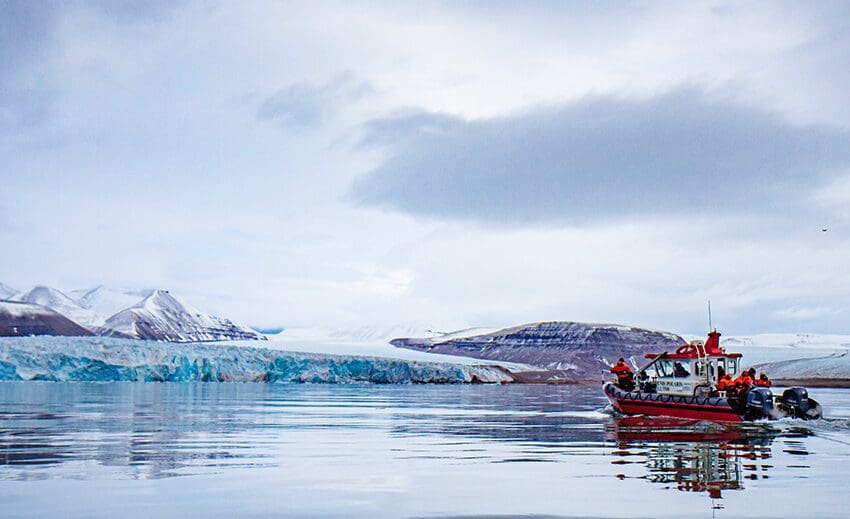Q&A about Arctic Safety studies

AS-303 excursion to Tempelfjorden. Photo: Tomi Vainio.
Top image: The natural environment in the high north is undergoing rapid change. The need for increased competence and sharing of experience in how to operate in a safe and environmental manner in the high Arctic is acute and extremely relevant. The photo is from an AS-303 excursion to Tempelfjorden. Photo: Tomi Vainio.
Did you know that you can study Arctic safety through the Arctic Safety Centre at UNIS? The natural environment in the high north is undergoing rapid change while at the same time the interest in presence and economic development in the region has never been greater. Therefore, the need for increased competence and sharing of experience in how to work in a safe and sustainable manner in the high Arctic is acute and extremely relevant.
8 April 2022
Text: Maria Philippa Rossi
Q: Can you take a whole semester in Svalbard?
A: Yes, the master course combination AS-302, AS-303, and AS-304 allows you to take an entire semester from August to November devoted to Arctic safety. Application deadline is 15 April.
Q: What are the career opportunities?
A: Your career opportunities will primarily be decided by your masters’ programs specialization, but your newfound specialization can change your trajectory. Our current alumni range from managers and personnel within HSEQA, crisis-, disaster-, preparedness-, and environmental- management. As well as careers within science and research. We have also seen specialists within other fields step into more Arctic or safety related positions after taking these courses.
Q: Do I need a letter of recommendation?
A: UNIS has the same admission model as mainland Norway. This means that there is no qualitative judgment about admission. Letters of recommendation are therefore not a part of the application process.
Q: What background do students have?
A: The backgrounds of our students vary from sociologists to medical doctors to engineers, mathematicians, geologists, and physicists. However, the bulk of our student base is usually made up of Risk and Safety specialists from NTNU, University of Stavanger, and UiT – The Arctic University of Norway.
Q: How are the courses designed?
A: The courses are designed around solving practical problems related to Arctic cases and use group discussions, field- and coursework to solve them.
Q: Do I need experience from polar regions?
A: You do not need any polar experience to take these courses, it’s what you are here to gain!
Q: How is student life in the Arctic Safety courses?
A: In our experience the Arctic Safety courses have a buzzing student life both inside and outside of UNIS. Due to the small student groups and intensive courses, students create long lasting bonds with each other quite quickly whether it be through the field, the student housing or through informalities such as Friday Gathering. This not only creates a good learning environment, but it also creates good relations outside of the academic arena where students organize dinners, hikes, and trips together.
Q: Does the Arctic Safety courses deal with sustainability?
A: These courses are aimed at introducing the challenges of the Arctic and providing solutions on how to deal with them, whether it be work safety, societal safety, or climate adaptation. All of the courses also aim to address the UN sustainability goals. Where we believe that we can contribute a lot towards goal 13. “Take Urgent action to combat climate change and its impacts”, where we have a particular focus on impacts.
Remember the application deadline: 15 April. How to apply
Read also: Risk assessment in the Arctic